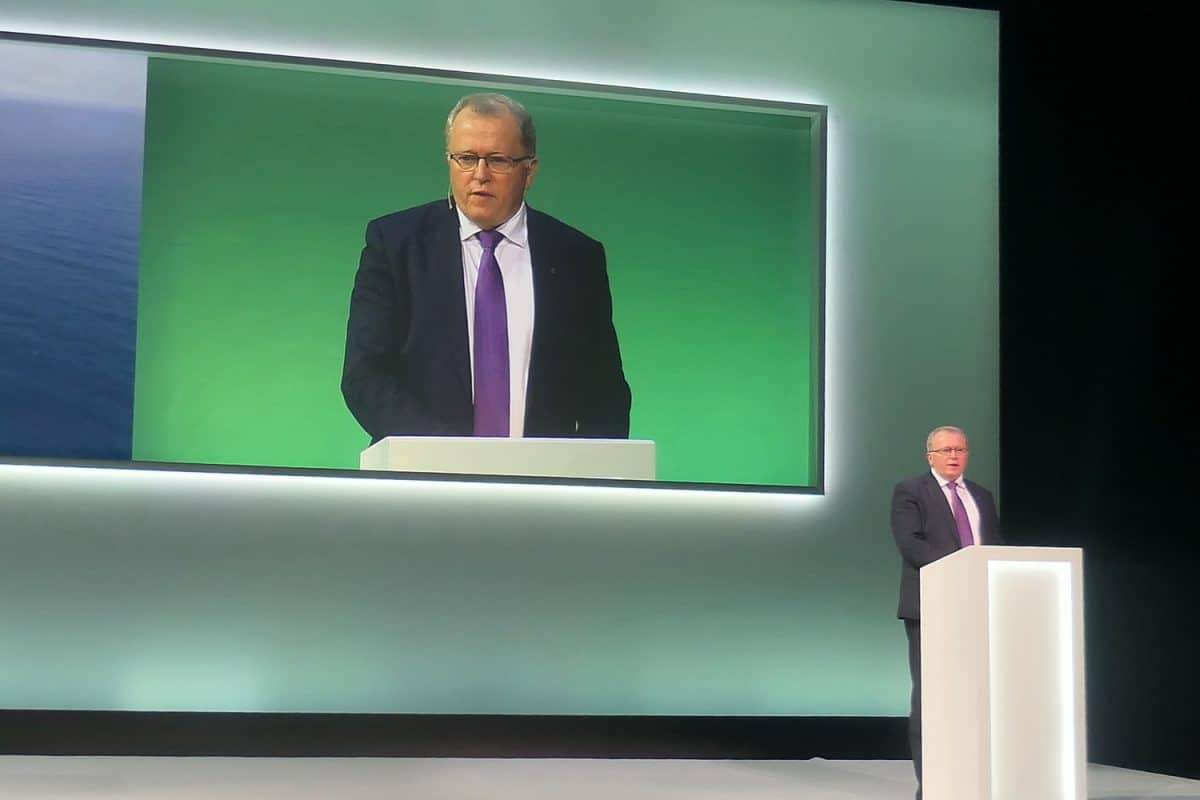The oil industry has a poor conscience. Strangely enough. It helps the world with the much needed access to efficient energy.
The oil industry has a poor conscience. It should have. Many oil companies help with corruption and mismanagement in poor, underdeveloped countries.
The oil industry has a poor conscience. It should not have. It contributes strongly to the Norwegian prosperity society in the form of income, labour and technology development.
From oil to energy
It is the emissions of CO2 that plague the oil industry. Of course, we could say, because globally, oil production is increasing year by year, but that is not the fault of the oil companies. It is the consumers who create the demand.
Nevertheless, the dream of a “low carbon future” was the theme of Equinor’s Autumn Conference in November. However, Eldar Sætre, Chief Executive Officer of Equinor, is proud to be a real oil boy (he has worked in the company throughout his adult life, he said).
– I am proud and everyone should be proud of what we have achieved in Equinor, he said during his talk.
He should continue with that, because Norway will produce oil and gas for a long, long time to come, but the emissions will go down, that is not to be avoided. First and foremost because the production will fall at one point in the 2020’s, and in 30 years the production will only be half of what it is today (according to calculations made by Sætre’s geologists), and secondly because the production is about to be electrified. The latter contributes to Norway boasting cleaner production than most other countries in the world (given that no coal power from Germany is used). For example, from the Johan Sverdrup field, emissions will be only 0.7 kg CO2 per barrel. The average in the world is 17-18 kg (!) per barrel.
However, many of those on the outside are shamed, and the enormous pressure from youth, interest groups and politicians has transformed the oil company Statoil into the energy company Equinor.
– We are an energy company, and we will become the world leader in offshore wind, said Sætre, taking the opportunity to boast the wind farm Dogger Bank, which will supply 4.5 million Britons (ie almost as many as lives in Norway) with renewable
The big question is whether the world’s demand for oil and gas will be reduced if Norway reduces its production.
– The obvious answer is no, replied Sætre himself.
The horror scenario is if oil and gas are replaced by coal. If that happens, all those major exploration and production stops have shot themselves in the foot. In this way, we agree with those who say that the oil and gas industry is part of the solution, not the problem, as the world works towards lower CO2 emissions.
«Solar is the star»
This was the message from Fatih Barol, the Director of the IEA, who had the honour of being the keynote speaker of the Autumn Conference.
– Solar panels are easy to install, but it is an important “but” and that is that the energy is not always there when you need it, pointed out the man who boasted he had never – not once in his life – bought a car. (Surely, we wouldn’t have done that either if we lived and spent most of our lives in the interior of Paris and travelled on first class on airplanes).
Barol showed that electricity from the sun is growing significantly faster than from both water and gas, while his forecast indicates that the contributions from nuclear and coal will flatten out. Nuclear power is unlikely to be much more important, as this technology is too controversial, but coal will remain important for the world (although reduced in Europe). We must relate to facts, not dreams, and the facts are that the Chinese are building coal-fired power plants like never before. While Norway has a total capacity of 35 GW (water and wind), China increased its capacity from coal by 43 GW, only in 2018, while threefold is under construction. Once we know that a coal power plant can have a lifetime of 40-50 years, it is easy to calculate that coal will remain important in the world’s (currently) most populous state.





